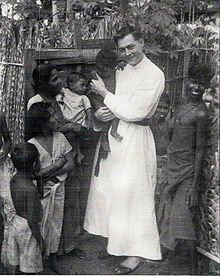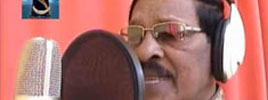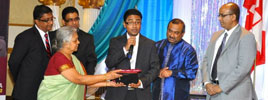
Educators
Reason for remembering Father Eugene John Hebert S.J

Though continents apart, New Orleans in a lot of ways brings memories of the Eastern Sri Lankan city of Batticaloa. The care free simple folks; the endurance of historical hardships; smell of evaporating muddy watersheds; the exquisite variation of its seafood culinary; the uniqueness of its music and fine arts – all bring memories of the Eastern town of Batticaloa, which laced with similarities of the Louisiana region in the American South. But what is even more similar is the longest river Mississippi – a fresh waterway that crisscrosses many American States; it is similar in character to the Batticaloa lagoon, though hardly comparable to its length and barely used for transportation.
Louisiana also brings back memories of a stark, but darker one – Father Eugene Hebert, a Jesuit priest and a son of Louisiana, who ‘disappeared’ according to official records, during the communal disturbances 22 years ago this month, along the road connecting the towns of Batticaloa and Valaichchenai. He was returning from another Church mission to provide relief along with a Tamil boy in the pillion of his scooter. Both were seen last passing the roadway not far from the gentle waves of the legendry ‘Singing Fish’ lagoon according to witnesses, about 15 km from the city of Batticaloa.
Fr. Eugene Hebert hailed from Jennings, Louisiana, about an hour’s drive, North West of New Orleans, distinct for its rice production for many decades amidst the growing oil industry. Eugene John Hebert joined the Jesuits on August 14, 1941 at the age of 17. After completion of Jesuit studies, he volunteered for the ‘Ceylon Mission’. As part of his assignment, he served in many capacities both at St. Joseph’s College Trincomalee and St. Michael’s College Batticaloa. In the 1970s, Jesuit schools were taken over by the State, and Fr. Hebert was sent to Batticaloa to work at the Eastern Technical Institute, the joint Jesuit and Methodist institute, as its director.
As a junior student at St. Michael’s in the early 70s, I was fascinated by Fr. Hebert’s appearance and electrifying character - who occasionally came from Tricomalee for basketball tournaments held at Batticaloa. First of all, I was perplexed as to why his name was pronounced as ‘Hebare’ instead of ‘Hebert’, as its spelt. Little do I know at that time that Louisiana was a French colony once, and in fact the very name Louisiana was derived from King Louis XIV of France (1643 – 1715).
ET’ phenomenon
Much more on a serious note, the game of basketball became an ‘ET’ phenomenon straight from the outer space, under the watchful narrow eyes, covered by thinly rimmed glasses on the frame of a slightly hunched, yet tall Fr.Hebert. He had a slight resemblance of Singaporean Statesman ‘Lee Kuan Yew’ and when I think of it now; he did more resembled like a US Marine, both in appearance and work ethics. Black hard boots, collarless white cotton T shirt, short ‘crew-cut’ hair style accompanied with a fast paced brisk walk and a penetrating smile – all that he radiated, pointed towards a disciplined man of action. By any means that did not translate into making him into a domineering coach, but rather putting together a wide-web of acumen, long practices, strategies and a rigid team work – all meticulously executed.
History of St.Michael's College

In The Year 1868 Fr.Francis Xavier Philip the first Tamil secular priest of Ceylon was Sent to Batticaloa by The Bishop Jaffna , Who Was also in Charge of the East Mgr Christoper Bonjean, With a sum of Rs 500 to start a boy's English school in Batticaloa.
Music Legend of Batticaloa

Jeevam Joseph Arulanandam was born in Amirthakali, Batticaloa into a musical family. Since his early childhood, he had great interest in anything related to music. As a young boy, he started to play numerous musical instruments. Music was his passion and been part of his life.
History of Past Pupils' Association [North America]

The views and experience expressed in this article are personal and my own and based on my fraternization with the members of the Past Pupils’ Association of St.Michael’s College, Batticaloa – North America from its inception in 1990


SMC - North America
FacebookSMC - Global Forum
Facebook